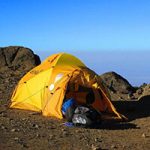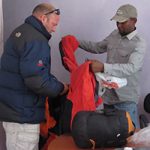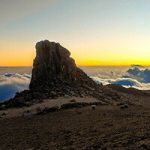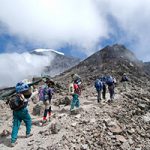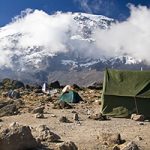Kilimanjaro Footwear
What hiking boots should I wear to climb kilimanjaro?
One of the most important items you will bring to Kilimanjaro is your hiking boots!
Due to the varied terrain and weather conditions you will need a very good pair of boots. Your trek will include some even paths. But mostly you will encounter trails that are uneven, slippery, steep, stony and you will be required to navigate rocks, scree and rock scrambles.
What boots should I wear? This is probably one of the most frequently asked questions we get from our clients while they are choosing their equipment. And rightly so! After all, your feet are what get you up Kilimanjaro, so look after them.
In this section we will cover what is important in your boot selection, choosing the the right socks and don`t forget the gaiters!
5 important considerations when choosing your Kilimanjaro boots
There are hundreds of different features that a pair of hiking boots can have. Many of the features that are advertised aren’t essential features, and while they may be nice to have, it is important that the boots provide the same basic features. We have covered the important features to look for when shopping for hiking boots. As long as these basic features are covered, you can have your pick of the rest.
Comfort
Fit is always the number one concern when it comes to choosing the proper hiking boots for any terrain. Once you have narrowed down the choices of boots that fit, you should begin evaluating the different features to find the boots that will best meet your needs.
Boot Weight
Hiking boots should be as lightweight as possible to prevent fatigue by not making the legs work as much. The boots shouldn’t be so light that they don’t offer ample support though.
Waterproofing
Boots should allow the foot to breathe, but prevent water from entering at the same time. Gore – Tex linings inside boots are one of the best materials for providing waterproofing and breathability.
Stability & Protection
Padded scree collars help to keep debris out as well as prevent the ankle from rolling. Shanks can be inserted between the inner and the upper to provide rigidity to the bottom of the boot for more stability.
Load Support
A rigid sole also provides better load support. When carrying a heavy load, boots should prevent the feet from bending too far forward or backward.
And the rest – Trekking shoes for camp, socks and gaiters......
It is your feet that carry you up Kilimanjaro and they need looking after! Choosing your hiking boots is the main thing but there are also considerations with selecting the right socks and some footwear to use while you are in camp.
Trekking Shoes
Give your feet a break! You are going to want to walk around the camp and perhaps do some exploring in the surrounding area so bring either some sturdy trainers or basic hiking shoes / trekking sandals that you can slip on in camp.
Trekking Socks
5-6 pairs of good quality trekking socks. Avoid cotton or cotton-blend socks as these absorb and retain moisture. Go for soft merino wool as these are the best for wicking moisture away from the foot.
Thermal Socks
On the upper reaches of Kili you will mostly need to wear thermal socks, especially on summit night. Bring at least 2 pairs of thick thermal socks and consider a polypropylene liner to assist with the wicking process.
Gaiters
Used to keep unwanted materials out of your boots (mud, water, rocks etc.), especially on the initial descent from the summit where there is a lot of scree.




